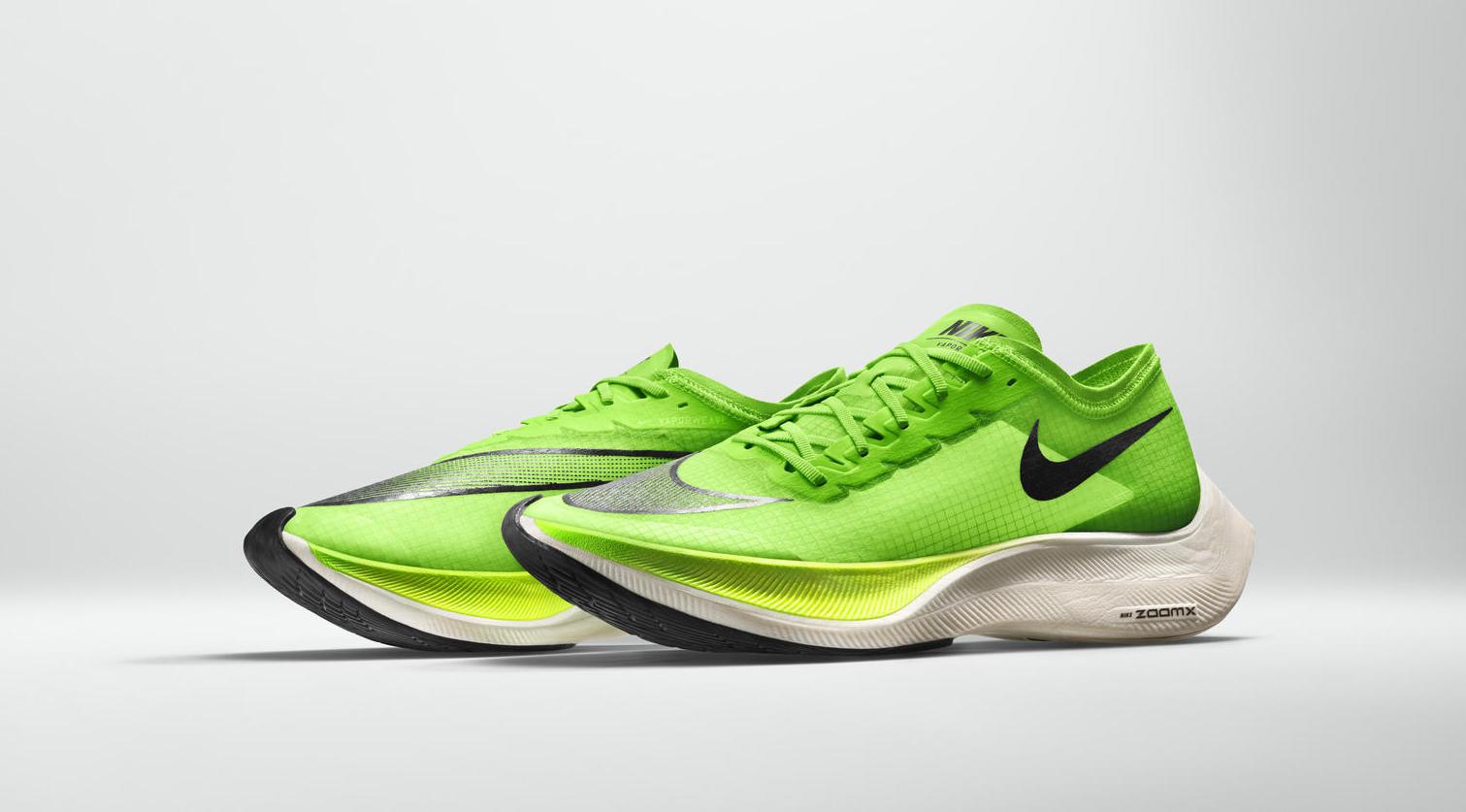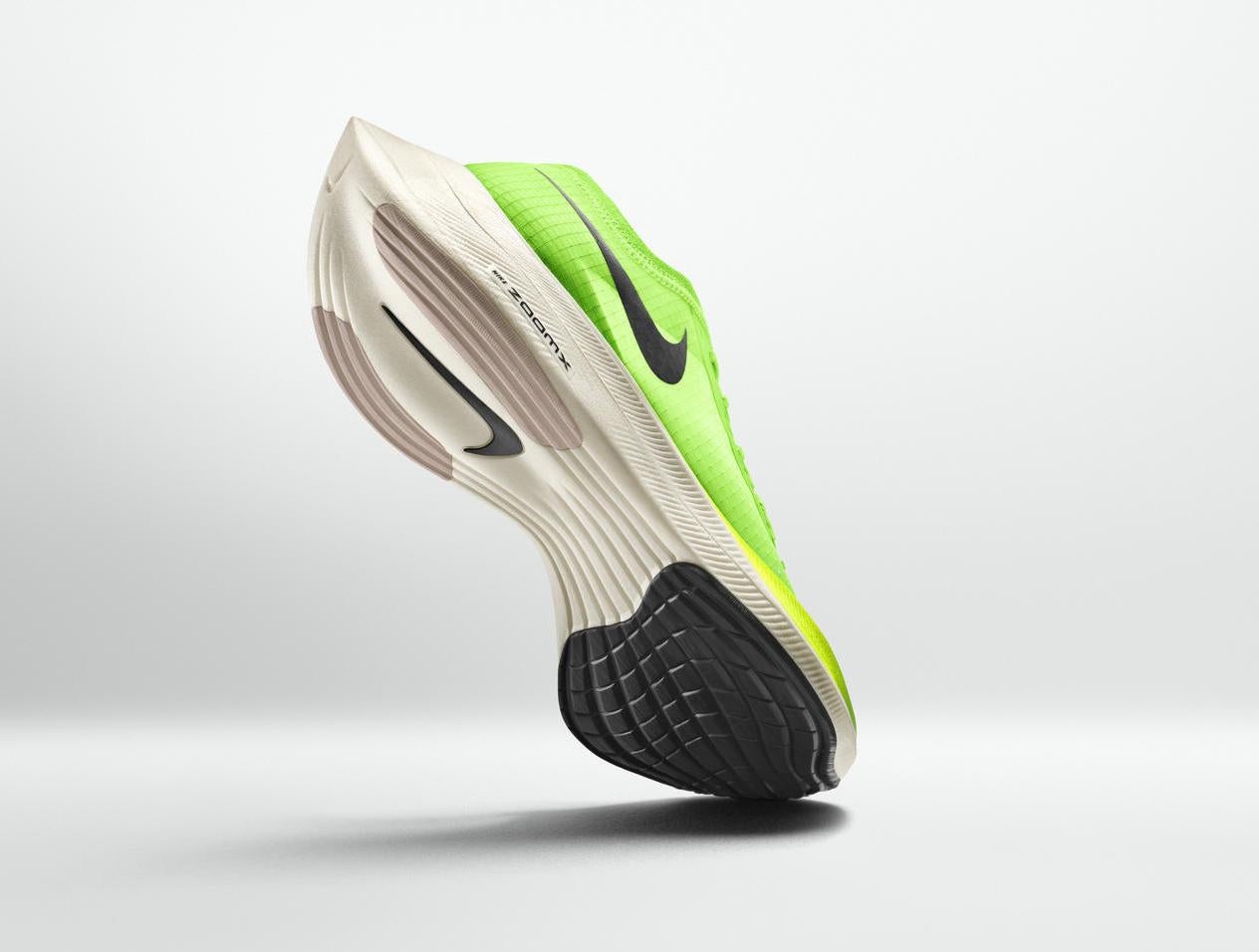Two years ago, Nike unveiled what it says is the fastest shoe on the planet. It proved that claim last year, when it carried Eliud Kipchoge across the finish line at the Berlin Marathon, more quickly than ever before, not just breaking the world record but shaving a minute and 18 seconds off it all in one go.
That shoe, the elite version of Nike's Zoom Vaporfly 4% Flyknit, even became controversial because it seemed to be just so good. The 4 per cent in its name referred to the extra efficiency boost Nike claimed that it gave to its wearer – that in turn led to concern that the shoe was making its runners too fast, to an extent that almost seemed unfair.
The claims seemed a little too good to be true, but have been largely borne out in use. A study of publicly available race data by the New York Times last year showed that the shoe added about 3 to 4 per cent of speed when compared to runners wearing other shoes, and they seemed to have gained more than 1 per cent when compared to the next-fastest shoe.
They do that by changing what happens to the energy usually lost when a shoe hits the floor, as its wearer runs. Usually, that gets dispersed as heat, but the Nike technology allows it to bounce back into the air, preserving the energy and speeding up the runner.
It only makes a small amount of difference. But that small difference adds up over the course of a race, and can decide who wins – meaning that improvements can prove controversial, and lead to questions about just how quick a shoe should even be allowed to be.
Now, Nike claims it has made yet another step forward. What it says is the fastest shoe in the world could be about to get faster.
The new version of the 4% is known as the Nike ZoomX Vaporfly NEXT%. And it could be the shoe to break through a milestone that until recently was thought entirely impossible: one day very soon, this shoe could allow an athlete to run the 26.2 miles of a marathon in under two hours.
That NEXT% name reflects Nike's hope that this keeps pushing on in terms of performance. While Nike obviously isn't sharing the same kind of specific claims about efficiency boost that were part of its predecessor's name – it says that it has worked with a broader field of athletes, so that kind of precise measurement is harder, and anyway the baseline has been pulled up so far that sticking with it seems old-fashioned – it says this will add a substantial performance improvement for the elite runners who wear it, the first of whom will be seen in the London Marathon this weekend.
It takes all the same innovations, the most notable of which is the carbon fibre plate that sits cushioned in foam underneath the foot, taking the energy when it hits the road and recycling it to propel athletes forward faster. That breakthrough is untouched in the new shoe – the plate is the same size and material, altered only slightly to fit in the new shoe.
(Kipchoge has called this system "perfect...really perfect", and Nike repeatedly stresses how tough it has been to update this shoe. As such, much has been left the same and every change has been prompted by precise feedback from its elite runners.)
Keeping much of the shoe the same should avoid some of the controversy that has dogged the previous shoe, with claims that it is helping out its athletes a little too much. Nothing has changed about that central innovation, and it has worked closely with the International Association of Athletics Federations (IAAF) to ensure that what changes there are still fit within its rules.
Athletic equipment has been too good in the past, and been banned for helping out athletes too much: from the so-called supersuits that used high-tech plastics to help their wearers propel through the water to golf balls that guide themselves too straightly through the air. Nike's 4% shoes were met with some of the same questions about how much help might be too much, but the IAAF has so far approved of the shoe and Nike is confident the same will happen this time around.
What has changed is just about everything else, including the foam that is wrapped around it. "The biggest update that I think you're going to experience from where we are in the 4% to the next% is that underfoot there will be 15 per cent more of the ZoomX foam," says Brett Holts, Nike's vice president of running footwear.
That extra boost – as well as the other improvements, like a brand new woven material on the upper part of the shoe and a change in the placements of the laces – could be enough to break through the two hour mark, which has become an important if arbitrary goal. These shoes emerged from Nike's Breaking2 project, created precisely to do that.

Eliud Kipchoge got tantalisingly close to that mark when he broke through the marathon record last year: he was just one minute and 39 seconds away. If this shoe gave the same kind of boost its predecessor does, that milestone could finally be broken through.
Nike has been working with runners including Kipchoge to make sure that every change in these new shoes responds to feedback from athletes, with the general principle of ensuring they feel comfortable and secure despite the chunky heel and lightweight. The outsole is made of a more durable and grippy material, which came in response to Kipchoge's concerns about handling when running in wet weather; the foam is differently distributed to make it feel even more secure; the laces have been moved towards the sides of the shoe rather than the centre, pushing them away from the sensitive part of the foot.
With all of those changes, is this the one to finally break through that mark? "It could be," says Holts, noting that it "does have something to do with the athlete", so requires perfect conditions and elite performance as well as good shoes.

But they'll certainly be trying, from London and then onto other marathons like Berlin, where that record was beaten last year. From this weekend, elite runners – including Kipchoge and Mo Farah – will be lining up wearing the new shoes, swapping the now famous red of the predecessor for the green (or "phantom glow") of the new shoes.







